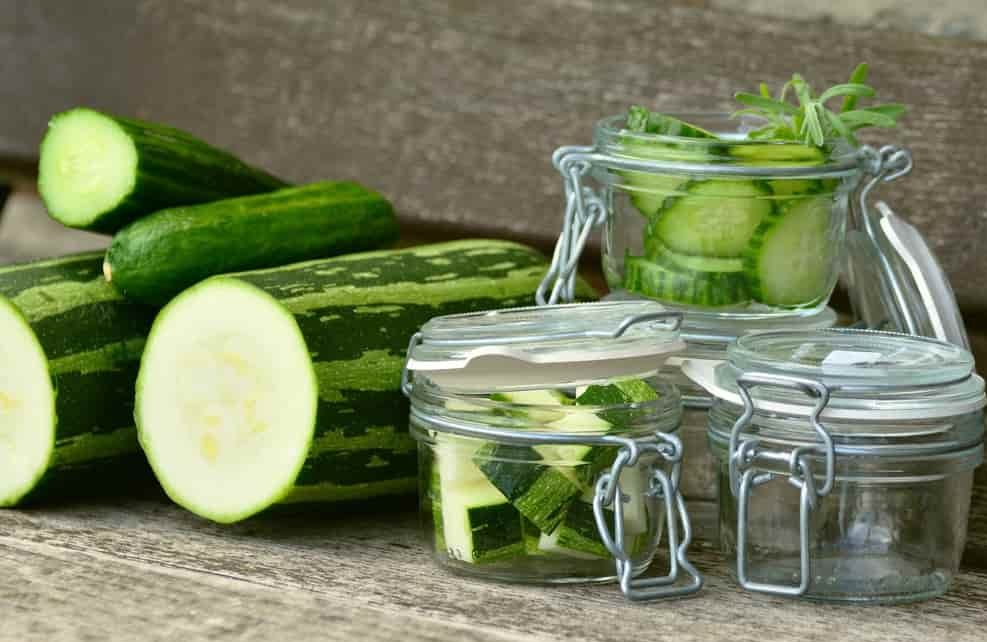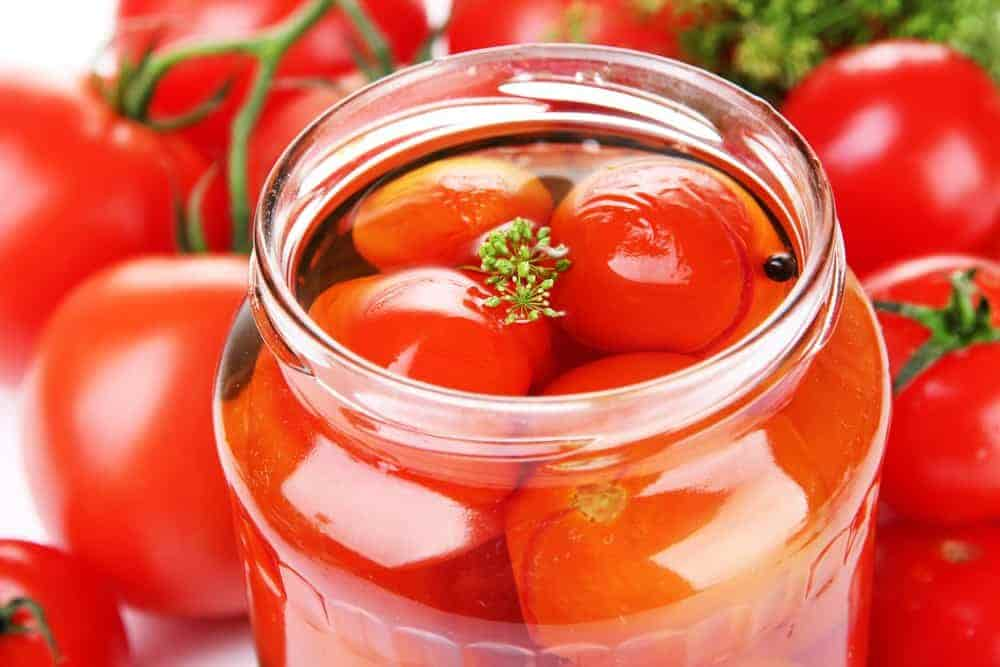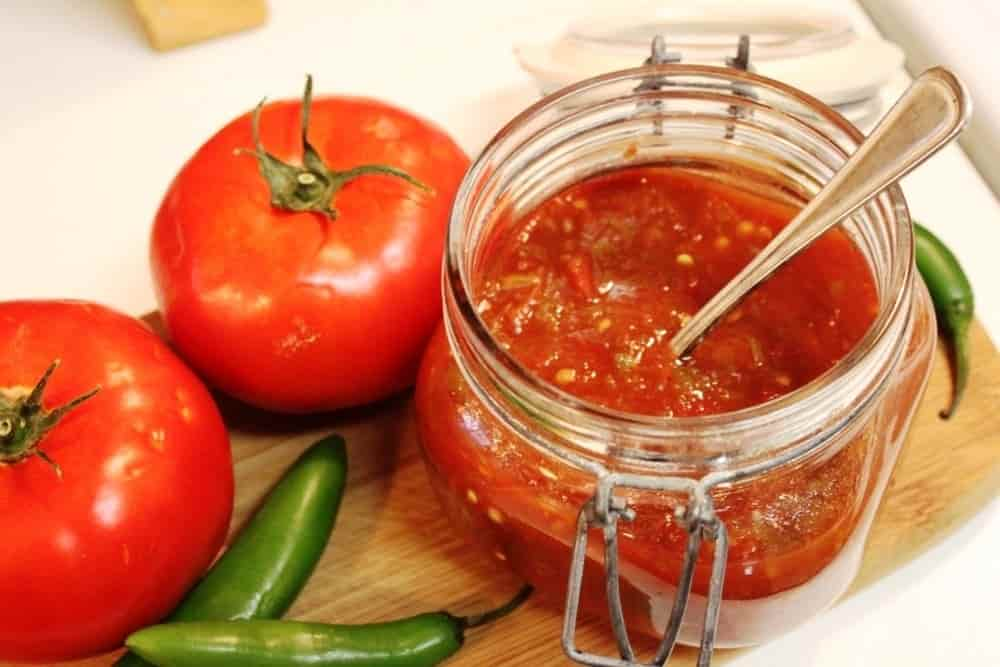The zucchini in tomato Sauce recipe is a great way to use canned zucchini and tomatoes from the garden. This simple recipe for tomato sauce makes your dinner different and gives you a chunky sauce that goes well with pasta. The sweetness of tomatoes makes this homemade tomato sauce taste great.
This is a healthy dinner that’s great for weeknights when you’re busy. This fresh tomato sauce will be ready by the time the water boils and the pasta are done. Check out Zucchini Corn Sauté if you want to try another dish with zucchini.
Check out One Pot Tomato Basil Penne and Roasted Cherry Tomato Penne if you want to try more tomato pasta dishes that taste like summer tomatoes. You can use 1 teaspoon of garlic powder instead of fresh garlic if you don’t have any. Even though fresh summer tomatoes are best for this sauce, you can make it any time of year with canned tomatoes.

Instead of the fresh tomato, add a 28-ounce can have diced tomatoes. You could also use cherry tomatoes to make this sauce. Just make sure you have four of them. You can serve this with any kind of pasta.
Medium shell pasta is shown in the picture. This sauce would go very well with fusilli, penne, and ziti. If you like long strands of pasta, you could also use spaghetti or linguini. The fresh tomatoes don’t need to be peeled for this recipe.
If you’d rather do that, see How to Peel Tomatoes for the fastest way to do it. If you like other fresh herbs better than basil, just put them in! It would be great to have fresh oregano and fresh parsley. If you don’t have fresh basil, you could add a teaspoon of dried basil or Italian seasoning. Add a tablespoon of tomato paste if you want your sauce to be a bit thicker and heavier.
You can keep any leftover pasta and sauce in the fridge for 3–5 days if you put them in a container that can’t let air in. If you want to make this sauce ahead of time and save it for later, put it in a freezer bag or container that won’t let air in. It will last for about two to three months in the freezer. Put the olive oil in a large skillet and turn the heat to medium-low.
Give it 30 seconds to heat up. Add the garlic, onion, and zucchini to the pan. Let them cook, stirring occasionally for 2 minutes until they just begin to soften. Salt and pepper the tomatoes and add them to the pan. Over medium-high heat, bring the mix to a boil. Once it comes to a boil, let it cook, uncovered, over low heat for another 20 minutes. Mix it every so often.
At some point, the tomatoes will break down, and the sauce will start to get thicker. While the sauce is simmering, bring a big pot or saucepan of water to a boil. You should use salted water to cook the pasta, so add 1 teaspoon of salt to the pot. Add the pasta to the boiling water and cook it according to the directions on the package for al dente pasta.

This will have a little bit of a bite to it. When the pasta is done, set aside a half cup of the pasta water to finish the sauce. Drain the noodles. After the sauce has been simmering for a while, stir in the fresh basil and the water you set aside.
Mix them in well, and then let the whole thing cook for another minute. Try the sauce, and if it needs more salt or pepper, add it. If the sauce tastes acidic at all, add a teaspoon of sugar to make it taste better. Put the pasta back in the pot.
Pour the sauce over the pasta and stir it all together well. If you’ve been wondering, “Is zucchini healthy?” the answer is a resounding “yes.” If you want to boost your diet, zucchini is the way to go.
The squash is full of important nutrients, from disease-fighting antioxidants to fiber that keeps your gut healthy. It’s also a versatile ingredient thanks to its mild, delicate flavor that works well in savory entrées and sweet desserts alike.
Need more details before stocking up? Read on to learn about zucchini’s nutrition, health benefits, and more, including chef-recommended zucchini recipes that will make you want to kiss them! Zucchini is a type of summer squash and a member of the gourd family. It is related to pumpkins, butternut squash, and melons, all of which are popular fruits and vegetables.
The University of Illinois Extension says that zucchinis come in different colors (dark green, yellow, pale green, and almost white), but they all taste and are good for you the same way. Oh, and here’s something else: zucchini is a berry, which is a type of fruit. But it is usually cooked like a vegetable (e.g., sautéed, roasted, steamed, or grilled).

Both the inside and outside of zucchini are full of nutrients, such as fiber, calcium, magnesium, potassium, and magnesium, which all help muscles. The whole squash has antioxidants like vitamin C and polyphenols that help fight disease. Even the soft, mild-tasting seeds, which you can eat, are good for you because they have fiber, vitamin A, and vitamin C.
Want a more in-depth look at the health benefits of zucchini? Here are a few that will finally answer the question “Is zucchini healthy?” The antioxidants beta-carotene, lutein, and zeaxanthin are all found in large amounts in zucchini. The plant pigments that give the product its yellow, red, or orange color are called carotenoids by Oregon State University.
Carotenoids are antioxidants. A study found that both green and yellow zucchini have carotenoids, but the yellow one has a lot more because of its color. Don’t forget that zucchini has a lot of vitamin C and is also a great source of antioxidants.
Chan says that antioxidants, like those in zucchini, get rid of free radicals, which are harmful molecules that, in large amounts, can cause oxidative stress, which damages cells and raises the risk of long-term diseases like cancer.
Eating a lot of antioxidants can help keep free radicals in check, protect cells from oxidative stress, and keep you from getting sick. “Zucchini is a great source of both soluble and insoluble fiber,” says Holmes.

Soluble fiber, in particular, is prebiotic, which means it feeds the good bacteria in your gut. This keeps them healthy and helps them regulate digestive functions like nutrient absorption, according to a 2018 article.
Soluble fiber is also, well, soluble: It absorbs water in the GI tract, making a gel-like substance that firms up a stool and may help ease diarrhea.
It’s pretty much the same as buying a zucchini from the grocery store without a package, but it’s easier. When shopping for raw, whole zucchini in the produce section, look for ones with no soft or wrinkled spots and bright colors, shiny skin, and firm texture.
These are signs that the zucchini is fresh and ripe. Don’t wash the zucchini at home before putting it in the fridge. Why? Washing the squash can make it go bad faster, so don’t do it until you’re ready to use it, which should be three to four days after you buy it.
When you’re ready to eat, you can eat the zucchini raw or cooked. You can boil, steam, grill, roast, or sauté squash, or you can add it to baked goods to make them healthier and moister.
You can even add it to oatmeal or smoothies to get more vegetables in your diet. Because zucchini has a lot of water, cooking it can make it soft. Before cooking, cut the zucchini into cubes, strips, or rounds and lightly salt them.
Let it sit for 20 to 30 minutes, then pat the squash with a paper towel to get rid of the extra water. Adding it to your recipe, as usual, will make your zucchini dish firmer and crisper. Zucchini is a mild-tasting vegetable that has a hint of sweetness.
This makes it a great base for many different dishes. Here are some ideas for tasty ways to cook zucchini: As a roasted side dish. Muhammad suggests roasting zucchini with potatoes and onions for an easy side dish.
She says, “Cut up all your vegetables, toss them in oil, add salt, pepper, and garlic powder, and bake at 400° F for 25 to 30 minutes.” Serve it with pasta like penne with caramelized onions or grilled chicken and brown rice. Spiced and cooked in a pan.
Another easy way to cook squash is to sauté cut-up zucchini. You can eat it as a side dish, add it to a stir fry or pasta, or mix it into a warm salad like this warm lentil veggie salad.
In lasagna. Slide a vegetable peeler (Buy It, $10, amazon.com) straight through the skin and flesh of zucchini from top to bottom. This will make long zucchini “ribbons” that can be put between layers of pasta and tomato sauce in lasagna.
You could even use the zucchini ribbons instead of pasta for a gluten-free dish, like this zucchini and heirloom tomato lasagna recipe.
Dietary health is essential, so make it a top priority. Due to our adherence to the highest quality standards, we will always provide our clients with healthful canned foods that taste great and exceed their expectations.
By incorporating moral farming practices, exhaustive strategies for food safety, a commitment to openness, and cutting-edge manufacturing, we provide people access to a level of healthy living that has never been available before.
Our company’s goal is to improve global health and environmental sustainability by raising awareness about those canned foods that are the most nutrient-dense while also having the least ecological footprint.

One of our key aims, as we strive to become the new global leader in the fresh produce sector, is to fully tap the potential of the business by using the combined expertise of all of our employees and the worldwide reach of our local operations.
Our vertically integrated supply chain will allow us to further optimize the supply chain from farm to fork, forging the shortest route to market, while the well-respected Sagharcanned brand will be the driving force behind innovation and new product development, adding value and providing a tangible point of differentiation.
Doing so is critical if we want to serve consumers all over the world with a product that lives up to their needs and wants and earns the loyalty of our customers.

Your comment submitted.